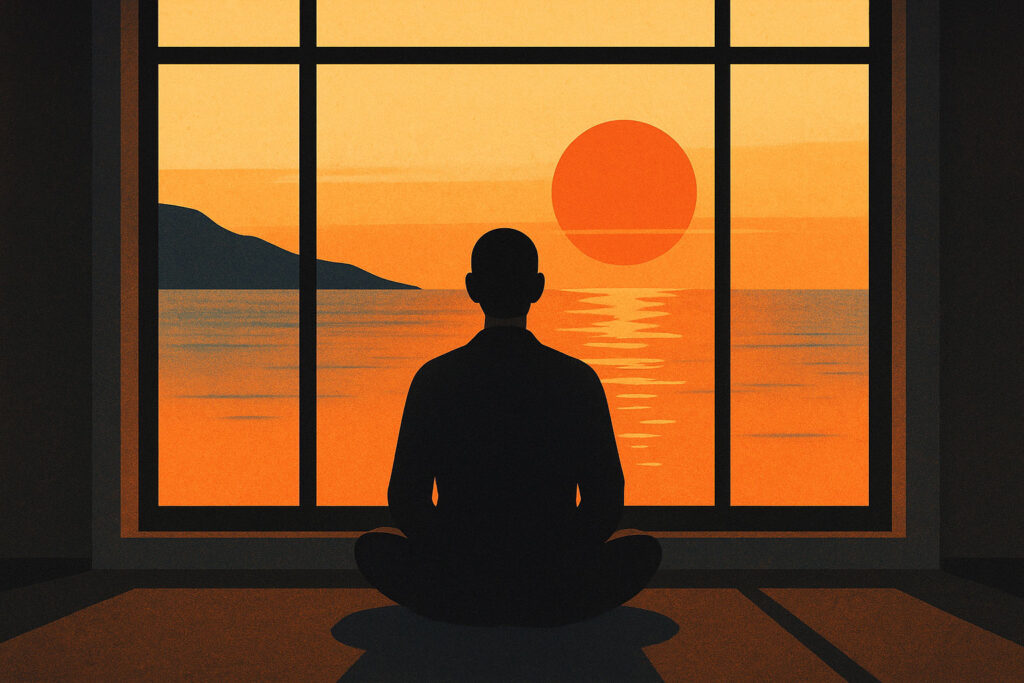
Breathing Your Way Back Home
A Buddhist parable of a blind turtle inspires reflection on life’s rarity, balancing samsara’s struggles with presence and spiritual homecoming.

Many years ago, when my son Griff was in junior high school, he and his class went on a snow camping trip to South Sisters near Bend, Oregon. This trip is an annual trip and a rite of passage for the seventh grade class. It is a challenging adventure for the kids with a fair amount of discomfort and winter weather unpredictability. That year, the weather forecast was decidedly poor. Very cold temperatures and tough conditions made for a stressful decision-making for the teachers leading the trip.
One of the peak moments of the trip—literally and figuratively—is the summit of South Sister itself. The day that the kids were slated to make the climb the weather closed in, making a game time decision critical for the lead teacher. After weighing every factor—the risk, the reward, the responsibility—the decision was made to pivot to keep the kids safe, avoiding possible hypothermia or other potential harm to the students.
In that moment there was a really clear decision: to persist and push forward with the original plan or pivot and opt for a different path. I have been thinking about these moments in our lives a lot lately. They represent this very interesting nexus of mind-body and external circumstances that we must confront—should we persist through whatever resistance we are facing, or pivot and take a different approach.
The crux of it is this: our relentless persistence through the resistance of any given task is a super power that humans can call on to find a way through any major challenge or difficulty. One more rep, one more push, one more risky move that finally creates the breakthrough. But there is a correlate skill set that is more elusive—knowing when to let go, walk away, cut your losses and move on. How we manage our approach to anything is an endless process of refinement and tuning, but here we have to look at the system.
How can we create a system to determine an effective way to decide when to push and when to pivot? The way I think about this system through the simple lens of a school snow camping trip might actually have some real life takeaways. I am convinced that every human endeavor is supported by three pillars: the aim or goal that guides us, the practice or strategy that moves us toward that goal, and the threshold or metrics that reveals when to persist and when to pivot.

First, my understanding is that there are essentially two types of goals. We have to distinguish between these two main categories of goals because their associated strategies are distinct: a goal that is iterative, where there is no finish line and existential goals that are finite. An iterative goal would be something like fitness, surfing, golf or art. These are skills and practices without a finish line; the refinement and the process-orientation of these goals allow us to adjust our practice and our strategy without ever having to give up on the pursuit.
An existential goal is finite; it has hard edges and real stakes. Should you summit the mountain? Should we discontinue a product line that isn’t working? Existential goals always have a threshold moment that requires us to make a decision—continue or change course. Each of these categories of goals with its distinct characteristics, changes how we approach our practice or our strategy.
When we have a clear framework of goal, strategy and threshold we can move more freely in harness. With existential goals, we must have a checkpoint that we can set—it could be weekly, monthly quarterly—to review and assess the efficacy of the strategy. Quarterly financial statements might be where the thresholds are met and decisions are made based on black and white numbers. The hit or miss on any of the metrics that have been established as a core component of the strategy will dictate whether it is time to pivot or continue to persist.
Whereas in iterative goals, like fitness, if we are in pursuit of a goal or a PR in a 5k run or a max deadlift, we can always adjust our practice if we don’t hit our target. The notion of persistence here is almost limitless because there is no finite moment when we shouldn’t continue, short of a physical injury. Our task revolves much more around the marathon mindset of a lifelong pursuit of developing or refining that skill. We can always change our training regiment or programming in order to achieve our goals, but there never really is a moment that would prevent you from continuing.
So while iterative goals teach patience and refinement, existential goals demand clarity because there is real consequence. Both are essential teachers; both test the self in different ways. The takeaway is simple: if your goal has stakes that require a decision to quit or move forward, there has to be measurable metrics that provide clarity for persisting or pivoting. Without that moment of assessment, there is no way to know where the next step should be.
“If one does not know to which port one is sailing, no wind is favorable.”— Seneca
And the final thought I keep coming back to is this: if moments of clarity are required for mission-critical decisions, then our mind-body cultivation remains the centerpiece of the work. When we are strong and healthy—physically, mentally, spiritually—our capacity to show up for those threshold moments expands. Presence and equanimity become the true superpowers. Isn’t it amazing how it always returns to that?
Monday Meditation: On a slow ten count, think about any of your current goals and notice whether they are iterative or existential. Is there a strategy in place to measure whether or not it’s time to adjust or pivot? As we persist along our journey and as we push into deeper levels of insight, it is helpful to have a system in place that supports reflection and assessment. This creates a resourceful mindset where we can draw inspiration from a feeling of possibility where we are always refining the movement pattern of our pursuit.

A Buddhist parable of a blind turtle inspires reflection on life’s rarity, balancing samsara’s struggles with presence and spiritual homecoming.

Pablo Neruda’s “Keeping Quiet” teaches stillness amid chaos, reminding us that silence, breath, and presence restore peace and balance.

Inspired by Rory McIlroy’s Masters win and local golf struggles, this meditation explores resilience, nerves, and the courage to persevere.